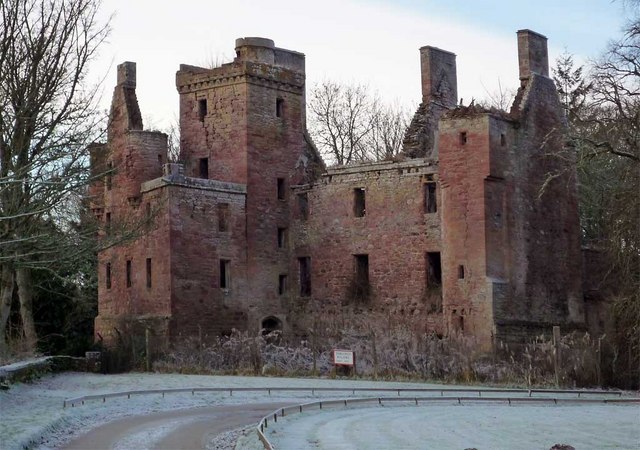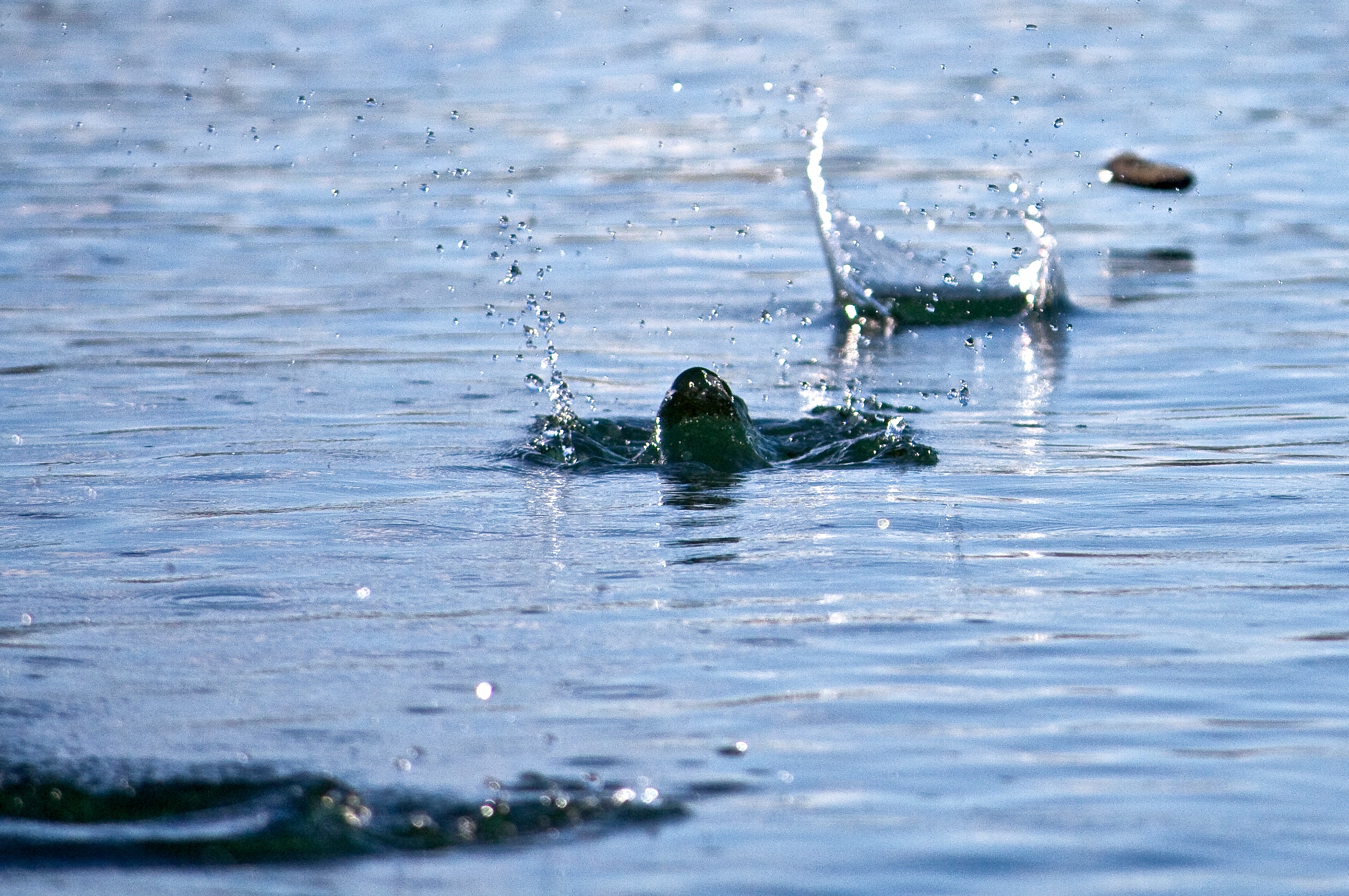|
Beauly Firth
The Beauly Firth ( gd, Linne Fharair) is a firth in northern Scotland. It is the outlet for both the River Beauly and River Ness. The Beauly Firth is bounded at its western end by the town of Beauly and its eastern by Inverness, where it empties into the Moray Firth. Several other watercourses drain into the Beauly Firth, including the Moniack and Redcastle Burns, and the Caledonian Canal. At low tide, the firth's north and west shores have extensive mudflats, as well as scattered boulders. The goosander is one of the firth's more common waterfowl. In 1982, the first bridge crossing the Beauly Firth was opened between North and South Kessock, known as the Kessock Bridge. As part of the A9 road, the bridge linked Inverness to the Black Isle for the first time. Prior to this, the Kessock Ferry crossed the firth at its eastern end since sometime in the 15th century. Today, the roads around the Beauly Firth provide a popular circuit for cyclists. However, the A862 (along the ... [...More Info...] [...Related Items...] OR: [Wikipedia] [Google] [Baidu] |
Kessock Bridge
The Kessock Bridge ( gd, Drochaid Cheasaig) carries the A9 road (Great Britain), A9 trunk road across the Beauly Firth at Inverness, Scotland. Description The Kessock Bridge is a cable-stayed bridge across the Beauly Firth, an inlet of the Moray Firth, between the village of North Kessock and the city of Inverness in the Scottish Highlands. The bridge has a total length of with a main span of . Designed by German engineer and built by Cleveland Bridge & Engineering Company, Cleveland Bridge, it is similar to a bridge across the Rhine in Düsseldorf. The Beauly Firth is a navigable waterway and hence the bridge is raised high over sea level. The four bridge towers dominate the Inverness skyline, especially at night when they are lit. The bridge carries the A9 road (Great Britain), A9 trunk road north from Inverness to the Black Isle. It is the southernmost of the "Three Firths" crossings (Beauly, Cromarty Firth, Cromarty and Dornoch Firth, Dornoch) which has transformed road ... [...More Info...] [...Related Items...] OR: [Wikipedia] [Google] [Baidu] |
Black Isle
The Black Isle ( gd, an t-Eilean Dubh, ) is a peninsula within Ross and Cromarty, in the Scottish Highlands. It includes the towns of Cromarty and Fortrose, and the villages of Culbokie, Jemimaville, Rosemarkie, Avoch, Munlochy, Tore, and North Kessock, as well as numerous smaller settlements. About 12,000 people live on the Black Isle, depending on the definition. The northern slopes of the Black Isle offer fine views of Dingwall, Ben Wyvis, Fyrish and the deepwater anchorage at Invergordon. To the south, Inverness and the Monadhliath Mountains can be seen. Description Despite its name, the Black Isle is not an island but a peninsula, surrounded on three sides by the sea – the Cromarty Firth to the north, the Beauly Firth to the south, and the Moray Firth to the east. On the fourth, western side, its boundary is broadly delineated by rivers. The River Conon, which divides Maryburgh from Conon Bridge, defines the border in the north-west. The south-western boundary ... [...More Info...] [...Related Items...] OR: [Wikipedia] [Google] [Baidu] |
Roman Empire
The Roman Empire ( la, Imperium Romanum ; grc-gre, Βασιλεία τῶν Ῥωμαίων, Basileía tôn Rhōmaíōn) was the post-Republican period of ancient Rome. As a polity, it included large territorial holdings around the Mediterranean Sea in Europe, North Africa, and Western Asia, and was ruled by emperors. From the accession of Caesar Augustus as the first Roman emperor to the military anarchy of the 3rd century, it was a Principate with Italia as the metropole of its provinces and the city of Rome as its sole capital. The Empire was later ruled by multiple emperors who shared control over the Western Roman Empire and the Eastern Roman Empire. The city of Rome remained the nominal capital of both parts until AD 476 when the imperial insignia were sent to Constantinople following the capture of the Western capital of Ravenna by the Germanic barbarians. The adoption of Christianity as the state church of the Roman Empire in AD 380 and the fall of the Western ... [...More Info...] [...Related Items...] OR: [Wikipedia] [Google] [Baidu] |
Geography (Ptolemy)
The ''Geography'' ( grc-gre, Γεωγραφικὴ Ὑφήγησις, ''Geōgraphikḕ Hyphḗgēsis'', "Geographical Guidance"), also known by its Latin names as the ' and the ', is a gazetteer, an atlas, and a treatise on cartography, compiling the geographical knowledge of the 2nd-century Roman Empire. Originally written by Claudius Ptolemy in Greek at Alexandria around AD 150, the work was a revision of a now-lost atlas by Marinus of Tyre using additional Roman and Persian gazetteers and new principles. Its translation into Arabic in the 9th century and Latin in 1406 was highly influential on the geographical knowledge and cartographic traditions of the medieval Caliphate and Renaissance Europe. Manuscripts Versions of Ptolemy's work in antiquity were probably proper atlases with attached maps, although some scholars believe that the references to maps in the text were later additions. No Greek manuscript of the ''Geography'' survives from earlier than the 13th ce ... [...More Info...] [...Related Items...] OR: [Wikipedia] [Google] [Baidu] |
Ptolemy
Claudius Ptolemy (; grc-gre, Πτολεμαῖος, ; la, Claudius Ptolemaeus; AD) was a mathematician, astronomer, astrologer, geographer, and music theorist, who wrote about a dozen scientific treatises, three of which were of importance to later Byzantine, Islamic, and Western European science. The first is the astronomical treatise now known as the '' Almagest'', although it was originally entitled the ''Mathēmatikē Syntaxis'' or ''Mathematical Treatise'', and later known as ''The Greatest Treatise''. The second is the ''Geography'', which is a thorough discussion on maps and the geographic knowledge of the Greco-Roman world. The third is the astrological treatise in which he attempted to adapt horoscopic astrology to the Aristotelian natural philosophy of his day. This is sometimes known as the ''Apotelesmatika'' (lit. "On the Effects") but more commonly known as the '' Tetrábiblos'', from the Koine Greek meaning "Four Books", or by its Latin equivalent ''Quadrip ... [...More Info...] [...Related Items...] OR: [Wikipedia] [Google] [Baidu] |
Cairn
A cairn is a man-made pile (or stack) of stones raised for a purpose, usually as a marker or as a burial mound. The word ''cairn'' comes from the gd, càrn (plural ). Cairns have been and are used for a broad variety of purposes. In prehistoric times, they were raised as markers, as memorials and as burial monuments (some of which contained chambers). In modern times, cairns are often raised as landmarks, especially to mark the summits of mountains. Cairns are also used as trail markers. They vary in size from small stone markers to entire artificial hills, and in complexity from loose conical rock piles to elaborate megalithic structures. Cairns may be painted or otherwise decorated, whether for increased visibility or for religious reasons. A variant is the inuksuk (plural inuksuit), used by the Inuit and other peoples of the Arctic region of North America. History Europe The building of cairns for various purposes goes back into prehistory in Eurasia, ranging in s ... [...More Info...] [...Related Items...] OR: [Wikipedia] [Google] [Baidu] |
Munlochy
Munlochy ( ; Scottish Gaelic: ''Poll Lochaidh'') is a small village, lying at the head of Munlochy Bay (''Ob Poll Lochaidh''), in the Black Isle in Ross and Cromarty, in northern Scotland. There are few early records of a settlement, but it seems likely that Munlochy expanded in the 1760s due to quarry workers extracting stone nearby to build Fort George on the far side of the Moray Firth. Geography Munlochy sits at the top of the tidal inlet of Munlochy Bay, that is itself an opening of the Moray Firth. Munlochy Bridge This is the name of popular pipe tune, a two line, three part Strathspey, which is often played for dancing. See also * Clootie well * Black Isle The Black Isle ( gd, an t-Eilean Dubh, ) is a peninsula within Ross and Cromarty, in the Scottish Highlands. It includes the towns of Cromarty and Fortrose, and the villages of Culbokie, Jemimaville, Rosemarkie, Avoch, Munlochy, Tore, and Nor ... References {{reflisthttps://musescore.com/song/munlochy_bridg ... [...More Info...] [...Related Items...] OR: [Wikipedia] [Google] [Baidu] |
Storm Ciara
Storm Ciara was a powerful and long-lived extratropical cyclone that was the first of a pair of European windstorms to affect the United Kingdom and Ireland at peak intensity less than a week apart in early February 2020, followed by Storm Dennis a week later. Ciara caused widespread wind and flooding damage across Europe, and at least 13 fatalities. The system emerged into the North Atlantic and underwent explosive cyclogenesis; the first severe weather warnings were issued for the United Kingdom and Ireland on 4 February well in advance of the storm's arrival. It was officially named ''Ciara'' by the Met Office the following day, becoming the twelfth named storm of the 2019–20 European windstorm season. Ciara subsequently made landfall in northern Scotland on 9 February and Norway the next day. Precursor low Named Winter Storm ''Kade'' by the weather channel brought heavy snowfall to the northern United States and eastern Canada, especially Newfoundland, New England and Ne ... [...More Info...] [...Related Items...] OR: [Wikipedia] [Google] [Baidu] |
Redcastle
Redcastle ( gd, an Caisteal ruadh), historically known as Edirdovar and Ederdour, is a medieval castle in Killearnan on the Black Isle, northern Scotland. It is so named from the colour of the stone of which it is built. The castle is now in a state of ruinous disrepair, although it is protected as a category B listed building. The structure has a L-shaped floor plan and is approximately 3-stories. It does not have a roof at this time. History Redcastle was until relatively recently one of the oldest inhabited houses in Scotland. A castle on this site was first constructed by William the Lion in 1179 and was known as Edirdovar. The castle was held by Sir John Bysset 1230 and in 1278 by Sir Andrew de Besco. In 1455 the Black Isle was annexed to the Crown. By 1492 the castle and its lands were under the control of Kenneth Mackenzie, 7th of Kintail, and they remained in the possession of Clan Mackenzie until 1790. The present building is dated 1641 but incorporates earlier work o ... [...More Info...] [...Related Items...] OR: [Wikipedia] [Google] [Baidu] |
Bunchrew
Bunchrew (Scottish Gaelic: ''Bun Craobh'', meaning "Near to the Tree") is a small village in the Highland council area of Scotland. It is around 3 miles (5 km) west of Inverness, close to the south shore of the Beauly Firth on the A862. The village has a small caravan park and camping site. In the past Bunchrew also had a small railway station as part of Inverness and Ross-shire Railway, opening in 1862. However, the station closed to passengers in 1960 and goods in 1964. In the late-19th century, Bunchrew had a large bone manure works close to its railway station. This was the subject of numerous investigations, due to the toxic fumes the factory emitted. Bunchrew House Bunchrew House is a Scottish baronial-style mansion on the shore of the Beauly Firth, at the village's north end. The house was built in 1505 by Alexander Fraser of Lovat, then with only two rooms as little more than a blackhouse, the original wall of which stands behind the wooden panelling in the dra ... [...More Info...] [...Related Items...] OR: [Wikipedia] [Google] [Baidu] |
Stone Skipping
Stone skipping and stone skimming are considered related but distinct activities: both refer to the art of throwing a flat stone across the water in such a way (usually sidearm) that it bounces off the surface. The objective of "skipping" is to see how many times a stone can bounce before it sinks into the water; the objective of "skimming" is to see how far a bouncing stone can travel across the water before it sinks into the water. In Japan, the practice is referred to as ''Mizu Kiri'', which loosely translates to "water cutting". In ''Mizu Kiri'' contests, both skimming and skipping principles, as well as a throw's overall aesthetic quality, are taken into account to determine the winners. History The act of skipping stones was mentioned by Marcus Minucius Felix in his dialogue ''Octavius'', in which he described children playing a game on the beach. Greek scholar Julius Pollux also noted the game in ''Onomastikon''. Among the first documented evidence stone skipping as a sp ... [...More Info...] [...Related Items...] OR: [Wikipedia] [Google] [Baidu] |







